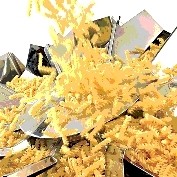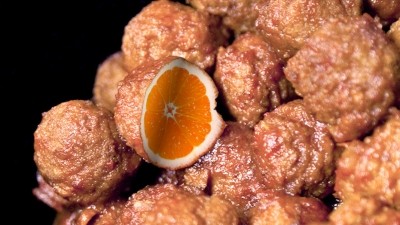Fibre-enriched pasta beats tradition in taste test

The research, published in the Journal of Food Science, taps into the trend for development of ingredients with health and wellness functionality.
When served with tomato sauce the banana-enriched spaghetti was preferred by a panel of tasters about 45 per cent more than the standard control.
“The addition of banana flour to spaghetti without detriment of consumer preference is possible,” wrote the authors, led by Edith Agama- Acevedo from Centro de Desarrollo de Productos Bioticos del IPN.
Study details
The Mexican researchers used unripe banana flour to formulate spaghetti. The flour contained a high proportion of non-digestible carbohydrates, including 17.5 per cent resistant starch, and 14.5 per cent non-starch polysaccharides like dietary fibre.
Formulations with durum wheat semolina were produced, containing 0, 15, 30, and 45 per cent banana flour.
Addition of the banana flour was found to decrease the lightness and diameter of the cooked spaghetti, in addition to increasing the water absorption of the product. On the other hand, the banana flour did not affect the elasticity or hardness of the spaghetti. Chewiness did increase with increasing banana flour levels, added Agama- Acevedo and her co-workers.
Consumer testing revealed no significant differences in preference between the control and the banana-flour enriched pasta.
“The addition of tomato sauce increased the acceptability of the spaghetti; spaghetti added with 30 per cent and 45 per cent of banana flour had higher acceptability than its control,” wrote the researchers.
Ongoing study
The study represents a continuation in the research and development of fibre-enriched pasta. The same researchers reported last year in Food Chemistry that the pasta containing the highest concentration of banana flour contained the most resistant starch, at 12.42 per cent, compared to only 1.11 per cent in the 100 per cent durum wheat pasta.
Additionally, the nutritional content was further enhanced by the presence of antioxidant polyphenols and tannins in the banana fibre. Again, the pasta with the highest banana flour content (45 per cent) contained the highest quantity of extractable polyphenols (1.68 mg per g) and condensed tannins (17.67 mg per g).
Resistant starch (RS) is so called because of its ability to resist digestion in the small intestine, unlike most other starches. Instead, RS passes through to the large intestine where it acts like dietary fibre and improves digestive health.
Resistant starch occurs naturally in foods such as unripe bananas and cooked and cooled potatoes, but commercially produced RS ingredients have started to appear on the market in order to allow food manufacturers to incorporate the ingredient into their products.
This has provided the industry with another means to tap into opportunities gleaned from the growing trend for health and wellness foods, with resistant starch fitting squarely into the low-glycaemic food trend, as well as health product positioning such as prebiotic fibre and healthy digestive system claims.
Source: Journal of Food SciencePublished online ahead of print, doi: 10.1111/j.1750-3841.2009.01215.x"Pasta with Unripe Banana Flour: Physical, Texture, and Preference Study"Authors: E. Agama-Acevedo, J.J. Islas-Hernandez, P. Osorio-Diaz, R. Rendon-Villalobos, R.G. Utrilla-Coello, O. Angulo, L.A. Bello-Perez






















